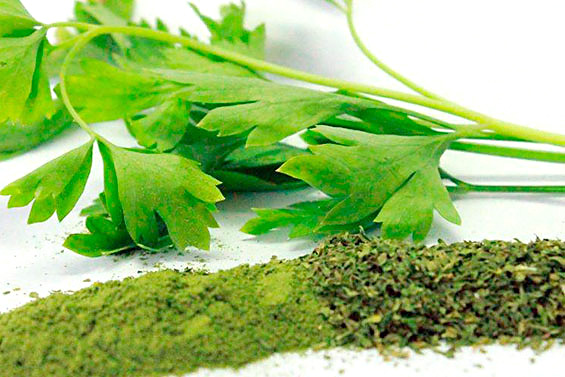
|
Product: Parsley (Petroselinum crispum)
|
|
| Basic Information: It is an herbaceous plant from the Apiaceae family, native to the central area of the Mediterranean region, introduced and naturalized in the rest of Europe, and widely distributed throughout the world. It is generally cultivated as a condiment. | |
|
Origin: Peru
|
Region: Lima, Arequipa
|
|
Seasonality:
Jan
Feb
Mar
Apr
May
Jun
Jul
Aug
Sep
Oct
Nov
Dec
|
|
|
Certifications: Kosher
|
Available Forms: Flakes, powder.
|
|
Suggested Industrial Applications: Food industry: meat products, sausages, prepared foods, baking, healthy snacks, beverages.
|
|
|
Uses: Aromatic herb, culinary ingredient.
|
|
|
Properties: Increases diuresis by inhibiting the Na+/K+-ATP pump (sodium-potassium pump). This occurs in the kidney, promoting the excretion of sodium and water, while increasing the reabsorption and levels of potassium.
|
|
| Main Functionality: Parsley, due to its folic acid content, helps control homocysteine levels, a substance that, when present in high amounts in the body, can trigger heart diseases such as strokes and atherosclerosis. Being rich in iron and vitamin C, parsley also aids in the treatment of anemia, providing strength and vitality to the body. | |
| Secondary Functionality: It has therapeutic effects as an emmenagogue, is beneficial for the kidneys and the digestive system in general, and relieves flatulence and cramps. | |
Nutritional Table:
| Components / Components | Per 100g / Per 100g |
| Calories / Calories | 292 kcal |
| Water / Water | 5 g |
| Carbohydrates / Carbohydrates | 50.64 g |
| Proteins / Proteins | 26.63 g |
| Total fat / Total fat | 5.48 g |
| Fiber / Fiber | 26.7 g |
| Ash / Ash | - |
| Calcium / Calcium | 1140 mg |
| Phosphorus / Phosphorus | 436 mg |
| Iron / Iron | 22.04 mg |
| Thiamine / Thiamine | 0.196 mg |
| Riboflavin / Riboflavin | 2.383 mg |
| Niacin / Niacin | 9.943 mg |
| Ascorbic acid / Ascorbic acid | 125 mg |